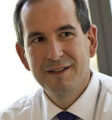Mycosis fungoides and the Sezary syndrome (SS) are rare lymphomas of CD4 + helper T cells. There is stagewise progression from patch/plaques to thicker tumor lesions/diffuse erythroderma. Blood involvement is a characteristic of SS. Outcomes are related to the extent of skin, blood, lymph node, and visceral organ involvement. Patients with limited patch and plaque disease are treated with skin-directed therapies. More advanced/refractory disease is treated with skin-directed therapies and oral or systemic immunomodulatory agents. Single-agent chemotherapies are used against tumors, refractory plaques, and lymph node and visceral involvement. Allogeneic stem cell transplantation is a potentially curative strategy for advanced/resistant disease.
Key points
- •
Mycosis fungoides (MF) and the Sezary syndrome represent a heterogenous group of presentations and is incurable for the majority of patients.
- •
The disease can be difficult to diagnose in its earliest stages because it may mimic a number of benign skin disorders.
- •
The International Society of Cutaneous Lymphoma has established criteria for diagnosis of early stage MF.
- •
In its advanced stages the disease is in incurable and patients are often treated with a multimodality approach with skin-directed and systemic agents.
Mycosis fungoides (MF) and the Sezary syndrome (SS) are the most common forms of cutaneous T-cell lymphoma. The World Health Organization and European Organization for Research and Treatment of Cancer classification of primary cutaneous lymphomas distinguishes MF and SS from other types of cutaneous T-cell lymphomas ( Box 1 ). The overall incidence of MF/SS according to the Surveillance, Epidemiology, and End Results registry is approximately 4 per 1 million. According to a recent review of Surveillance, Epidemiology, and End Results data, 1713 patients were diagnosed with MF from 2004 to 2008. The mean age for patients at the time of diagnosis is between 40 and 60 years of age, but the disease has been reported in children. MF is more common in males, and is seen more frequently in African Americans relative to Caucasians. The disease presents at a younger age in non-Caucasians and is more likely to present in an advanced stage in African Americans.





